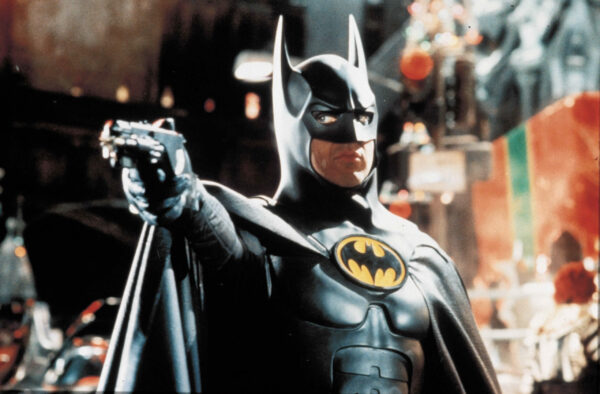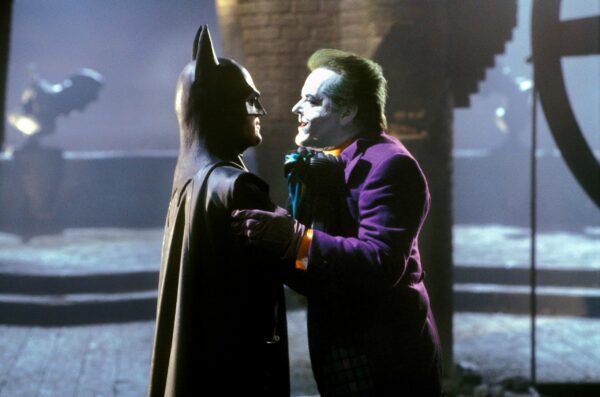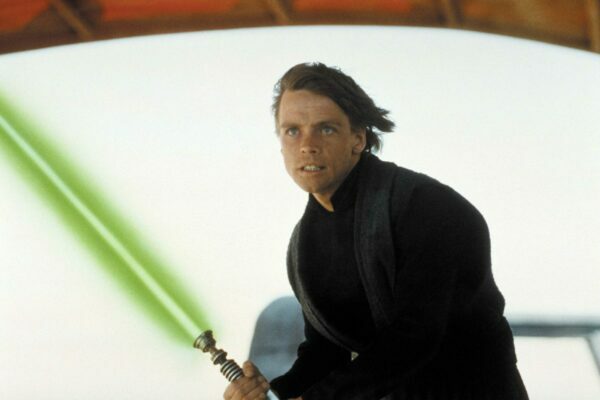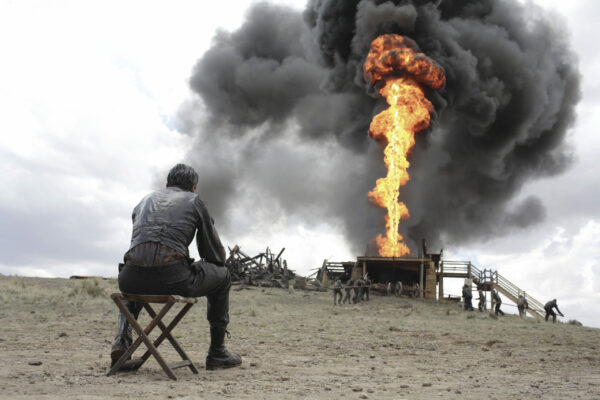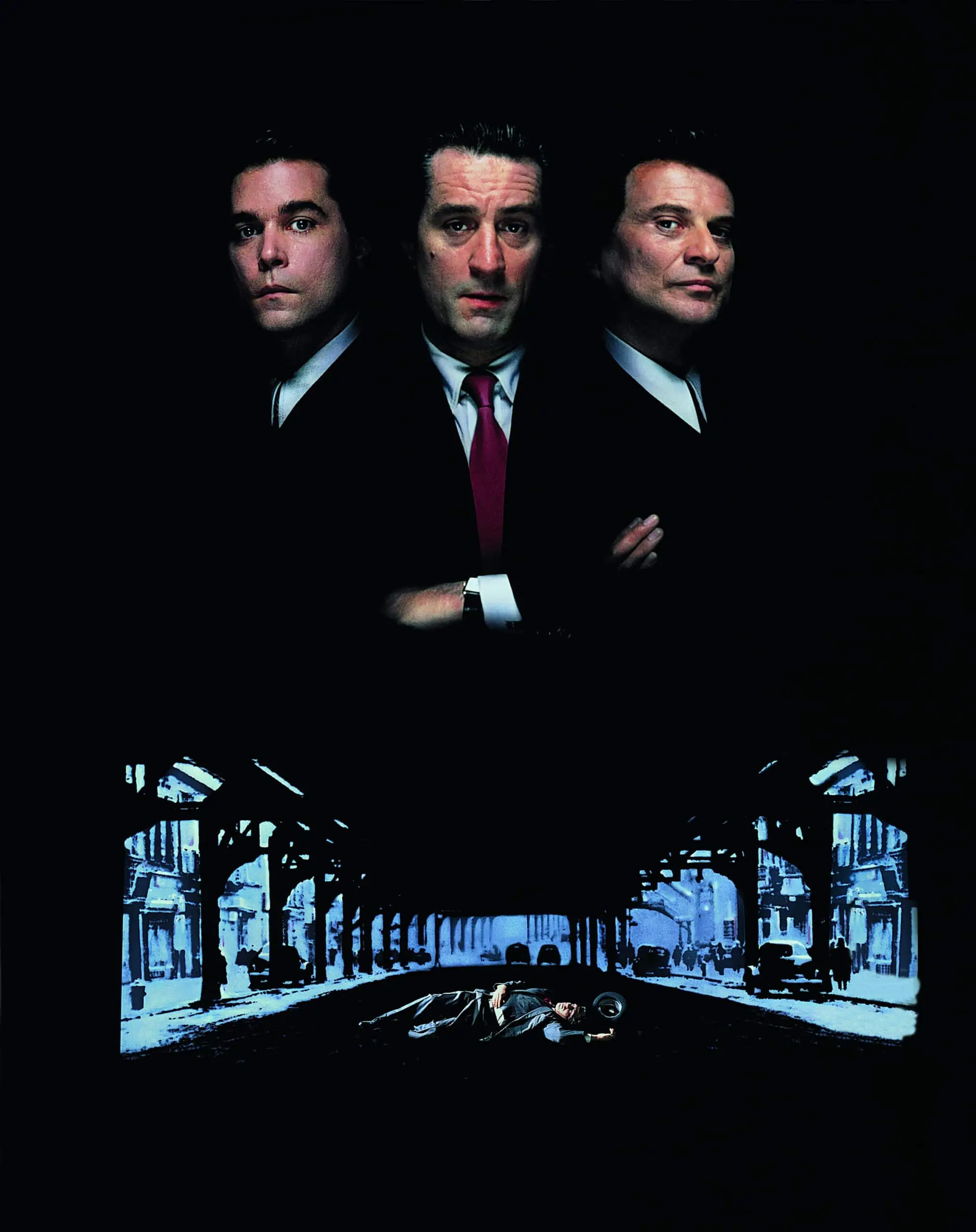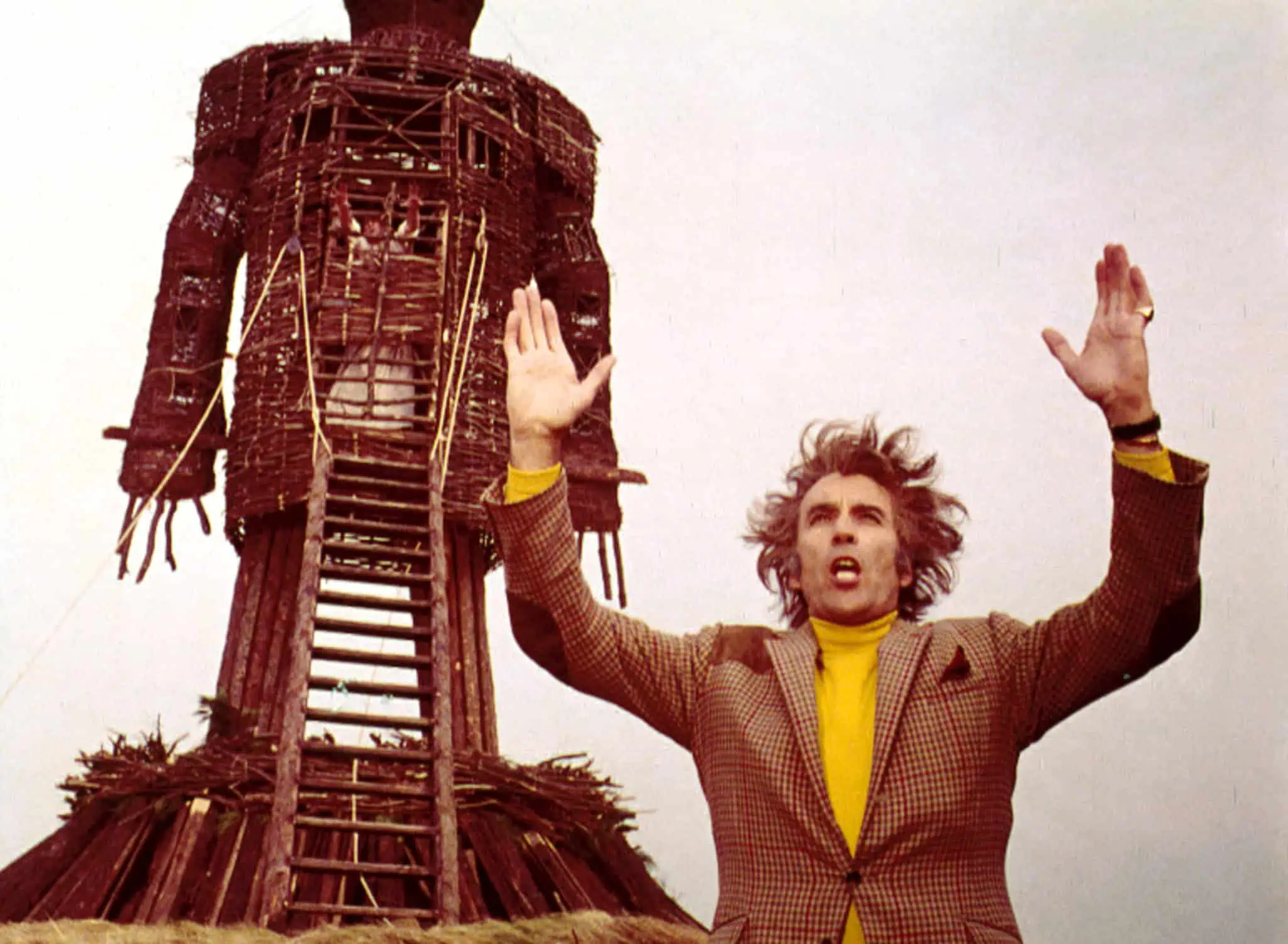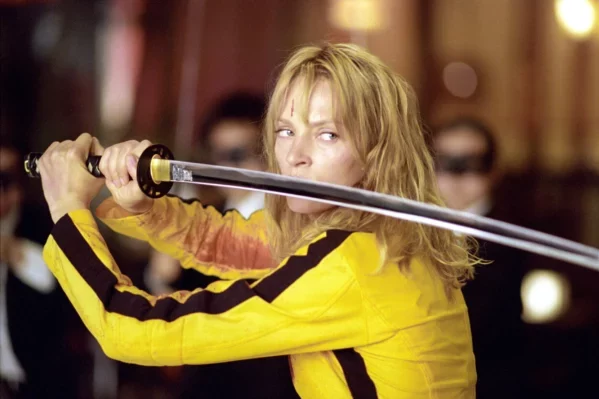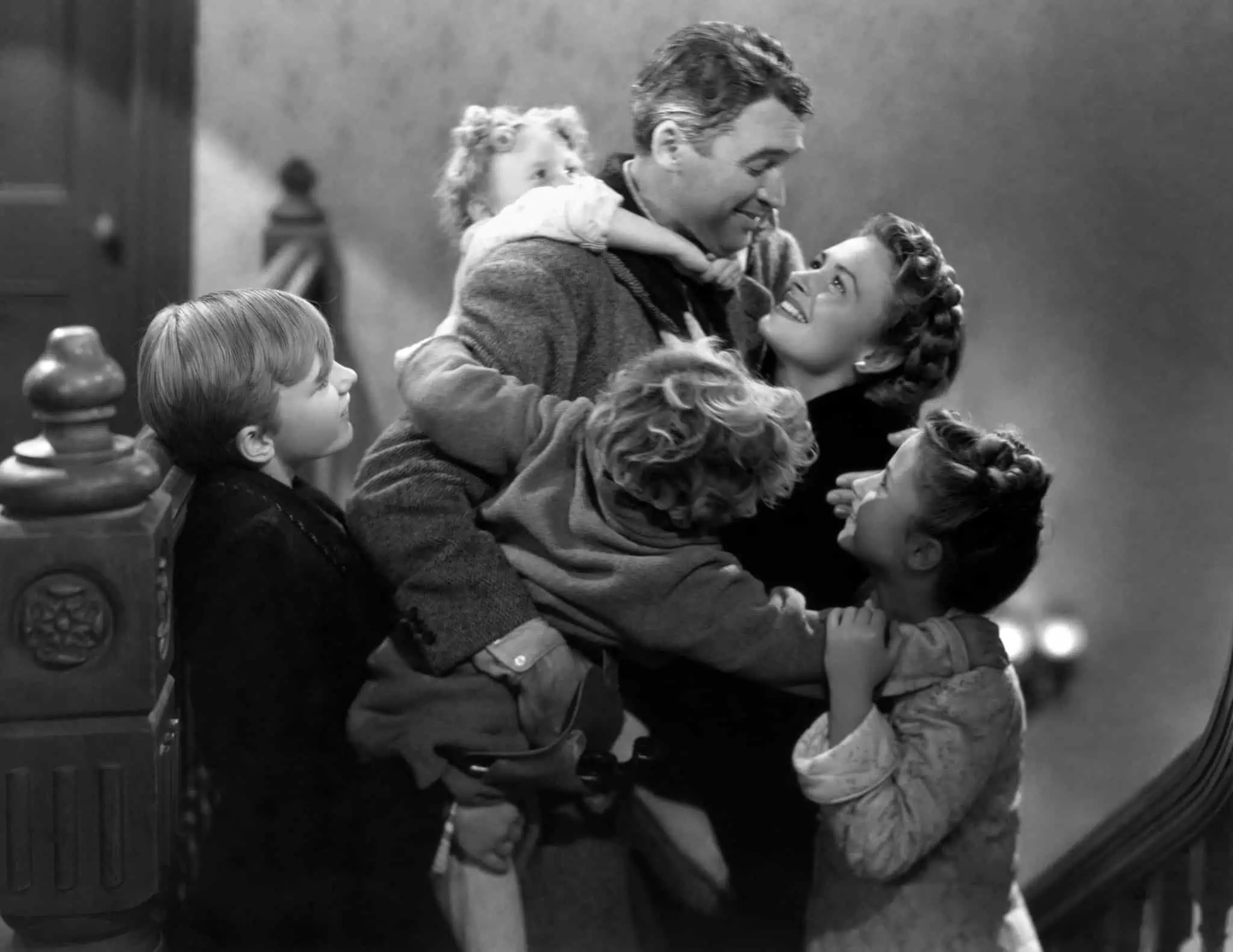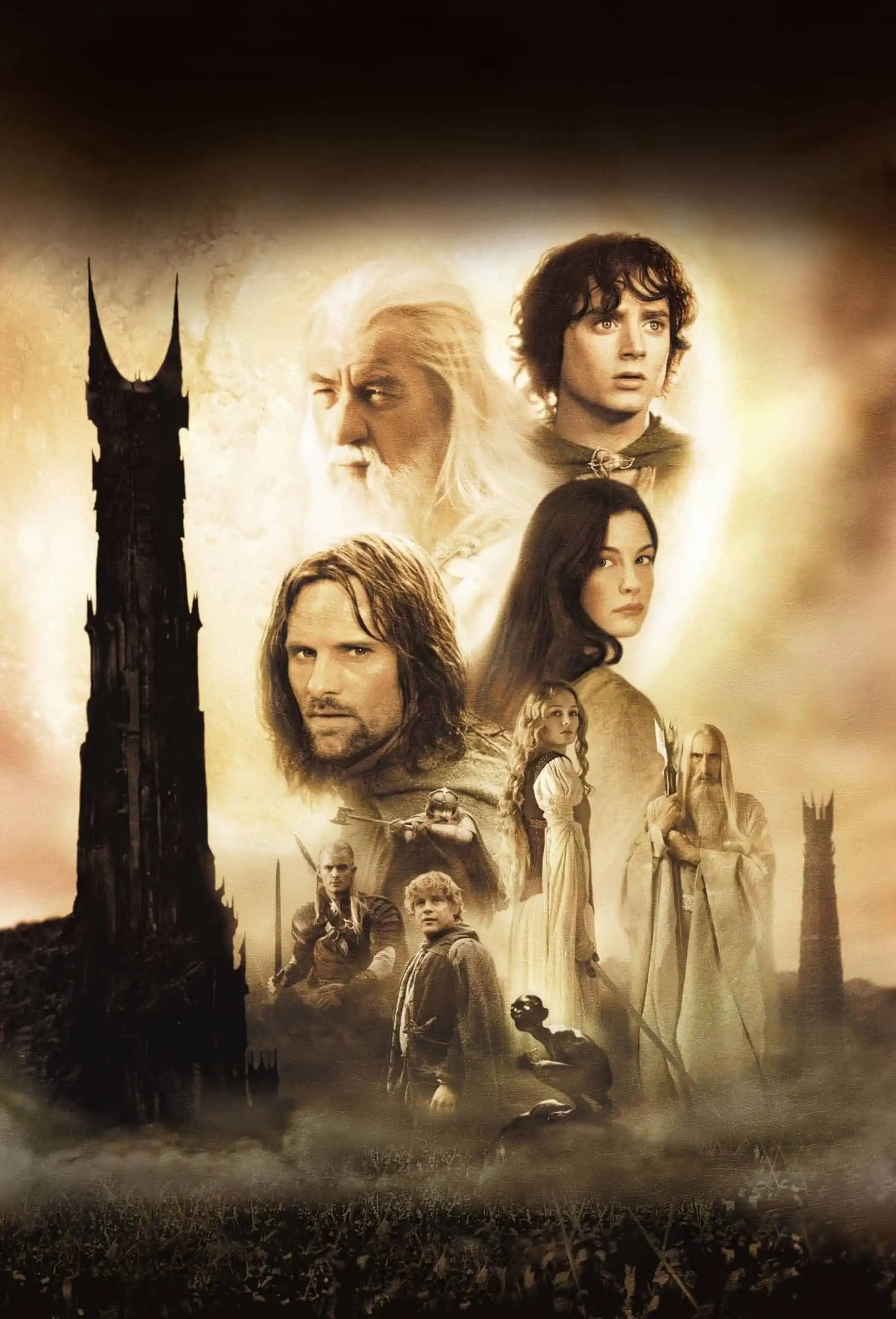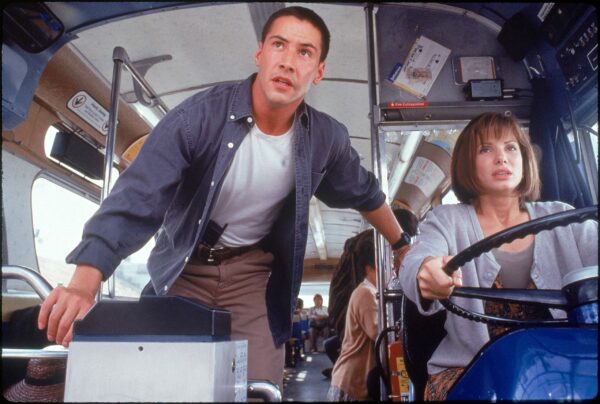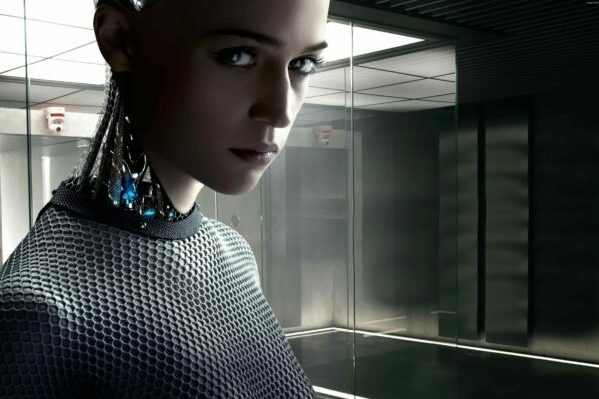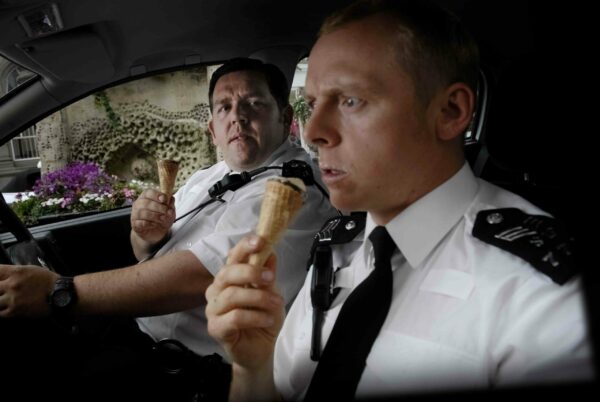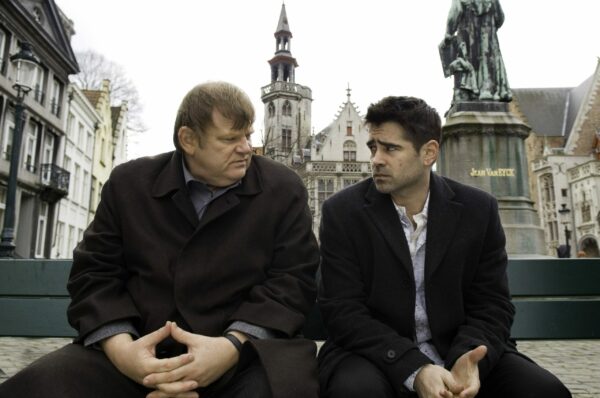
Stanley Kubrick’s Full Metal Jacket (1987) is among a select bunch of classic Vietnam War movies, and Joey Jones is here to bring you 25 interesting facts about another great movie.
Full Metal Jacket wasn’t the first time Stanley Kubrick had directed a movie in the war genre (that was Paths of Glory in 1957) but it has gone on to be his most well known, and is regarded as possibly Kubrick’s most accessible film from any genre. A classic nowadays, the production of Full Metal Jacket wasn’t without incident, problem, and bizarre stories. In 25 fascinating, fun facts about Full Metal Jacket, we tell the tale of the making of a Vietnam War classic.
1. The first scene in the film was the last one filmed
The first image we see in the film is a group of teenagers visiting a barber’s. The latest recruits into the US marine corp, they’re having their heads shaved and their identities stripped, all to the strains of Hello Vietnam by Johnny Wright.
This scene was actually the final thing Kubrick filmed, and the actors had to return to shoot it months after filming wrapped. Many of the young cast were not happy, as they’d just grown their hair back.
The opening to Full Metal Jacket
2. Real life military bullying has echoed the film
One of the toughest scenes to watrch in the film is the moment that bumbling recruit Private Pyle is attacked by his fellow trainees in the middle of the night. They hold him to his bed and beat him with bars of soap wrapped in towels.
This kind of terrible bullying has been reported in military academies in real life and this kind of beating is called a ‘Blanket Party’. It’s called that because of this scene in Full Metal Jacket, where Pyle is pinned to his bed by his blanket.
3. A legendary filmmaker was a big fan
Billy Wilder – the iconic writer-director behind Hollywood classics such as Some Like It Hot (1959) and The Apartment (1960) – was so impressed by the opening half of the film that he said if Full Metal Jacket had ended after the Parris Island sequence, it would’ve been the best movie he ever saw.
4. Kubrick had to deal with some production issues
There were some pretty major problems that Kubrick had to contend with. At one point during one of the Vietnam battle sequences, an entire family of rabbits was killed by an explosion. Being a big animal lover, Kubrick was so distraught he shut down production for a day.
And another time, when he was scouting locations with the Director of Photography Douglas Milsome, Kubrick was driving his wife’s new SUV around the English countryside, and crashed the car into a six foot ditch. Milsome said that Kubrick didn’t even mention the crash, he just got out of the car and carried on talking about how it was a great location on the walk home.
5. The film was shot entirely in England
Despite Full Metal Jacket being set partly in the US and partly in Vietnam, it was filmed on location in England. Kubrick lived in England at the time and didn’t like to fly, even for filming. The locations in England were Pinewood Studios and Bassington Barracks.
This famous sequence where a Vietnamese sniper takes out half the team was shot at Beckton Gasworks in London, which was due for demolition. The production designer on Full Metal Jacket was called Anton Furst and he had 300 palm trees flown in from Spain to create the tropical feel needed. He also went through over 6000 photographs from the Vietnam War as research. Furst himself said:
“We didn’t want blue skies; if the sun came out, Kubrick didn’t shoot. We had every building on fire. Parris Island was supposed to train them for their tour of Vietnam, so we contrasted the unbelievable cleanness of the boot camp with the incredible filth of the actual war; the point was that they came up against something they could never have trained for.”
A movie producer called Stephen Woolley has told a story about a time in 1986 when he was having a birthday party at his flat. Anton Furst was there, and he collapsed due to exhaustion, because he was on personal call to Kubrick 24 hours a day.
The sniper sequence, filmed entirely in London, England
6. Kubrick wanted an unknown cast
The stripping of identity is a theme of Full Metal Jacket, and Kubrick wanted to reflect this by hiring a cast who weren’t famous at the time of the film’s release. Because he wanted unknown actors in the leads, Kubrick placed ads throughout the US for young aspiring actors to send in audition tapes. They received about 3000 submissions, and Kubrick personally watched most of them himself.
7. There were other names up for the lead role
The lead character in the movie is Private Joker, played by Matthew Modine, and how he came to get the role was a little unusual. According to Modine, Val Kilmer (an up-and-coming actor at the time) confronted him in a restaurant and challenged him to a fight because he thought Modine had stolen the part of Joker from him unfairly. But, at that point, Modine wasn’t even aware of the film or that Kubrick was auditioning. As a result, Modine sent in some footage from VisionQuest, in which he’d appeared in 1985, and won the part of Joker.
Also, the role of Joker was offered to, and turned down by, Bruce Willis. He had scheduling conflicts with his hit TV show Moonlighting so couldn’t take it.
And, before Modine, Anthony Michael Hall was actually cast as Joker. Anthony Michael Hall is probably most well known for playing nerdy Brian in The Breakfast Club (1985), and Kubrick hired him as his lead in Full Metal Jacket. It didn’t work out because Hall and Kubrick couldn’t agree on a salary for the film, so Hall was replaced by Matthew Modine.
8. Matthew Modine went through quite a bit during production
Joker goes through quite some transfomration in the film, and so did Matthew Modine playing him. The production was so long that, in that time, Modine got married, his wife got pregnant, the child was born, and then turned 1 year old all during the course of filming.
Modine also did some work off screen to get into character during production. He would bring a diary to the set and write in it every day. This diary was later published as Full Metal Jacket Diary.
Also, Joker’s real name is JT Davis. This is a reference to Spec. James T. Davis, who was the first US casualty in Vietnam – killed in 1961.
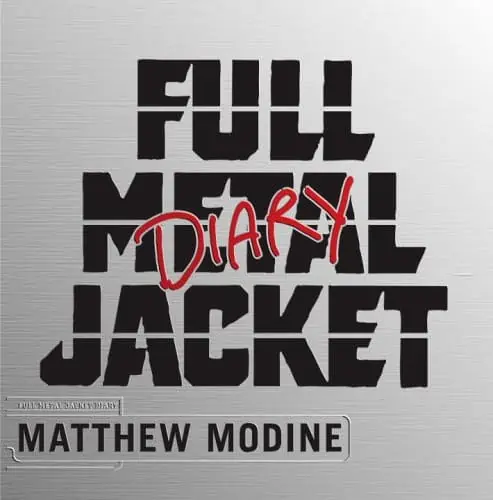
Full Metal Jacket Diary by Matthew Modine
9. Modine and Kubrick fell out once or twice
In Modine’s Full Metal Jacket Diary, there’s a passage where he talks about falling out with Kubrick on the set. Modine asked for permission to leave because his pregnant wife was scheduled to have a C-section, and he didn’t have scenes planned for that day. Kubrick didn’t want him to leave, and said, “you’ll just pass out from the blood and get in the way of the doctors.” Modine said if he couldn’t leave, he’d cut his own hand to get taken to hospital, and Kubrick said, “okay, you can go. But only if you come back straight after it’s done.”
Modine also said that he became close with Kubrick during filming and saw him almost as a father figure. And after the film came out, he called Kubrick up for a chat, but Kubrick was already into his next project and not interested in talking to him. He said, “I was young, and that was really upsetting as I’d thought he cared about me.”

Matthew Modine and Stanley Kubrick on the set
10. R. Lee Ermey lobbied Kubrick for his part
The man who teaches Joker how to be a killer is Gunnery Sergeant Hartman, the toxic drill sergeant who hurles a barrage of insults at the recruits on Parris Island. He’s played by R. Lee Ermey, who had appeared in Apocalypse Now (1979) as a helicopter pilot, but it wasn’t until Full Metal Jacket where he had a major role in a movie.
To make Hartman’s performance and the recruits’ reactions as convincing as possible, Matthew Modine, Vincent D’Onofrio, and the other actors playing recruits never met R. Lee Ermey before filming, and Kubrick made sure that Ermey didn’t talk to the other actors between takes.
R. Lee Ermey had little acting experience, but lobbied for the part of Hartman. Before Ermey was an actor, he had actually been in the US military and served in Vietnam, and he was originally hired as a consultant on Full Metal Jacket – he was an advisor when they were creating the Vietnam sets and locations.
Ermey did an audition on videotape in which he yelled obscene insults and abuse for 15 minutes without stopping, never repeating himself – despite being pelted with tennis balls and oranges. Kubrick was so impressed that he cast Ermey as Hartman.
Kubrick originally was going to write dialogue for Ermey’s character himself, but he became so impressed with what Ermey improvised, he let him do it. This was the first time Kubrick had let an actor improvise since Peter Sellers in Dr Strangelove (1964). And Ermey’s performances were so faultless that they were all done in two or three takes, except the Jelly Doughnut scene, which was 37 takes. Ermey said he had no voice left by the end of it.
The jelly doughnut scene, which Kubrick shot 37 times
11. Somebody else was originally cast as Hartman
Kubrick originally wanted Bill McKinney to play Gunnery Sgt. Hartman. Bill McKinney is most well-known for playing Sadistic Mountain Man in Deliverance (1972) – the character who utters the, “sqeual like a pig!” line. However, after he saw Deliverance, Kubrick was so freaked out by McKinney’ performance that he changed his mind, as he didn’t want to be in his presence.
Kubrick then turned to an actor called Tim Colceri, and he was cast as Hartman. When Colceri was filming, he shared a house with Michael Biehn, who was in England at the same time shooting Aliens (1986). Biehn tells a story that, on the day Colceri arrived in England, he received a memo from Kubrick. The memo asked him to learn the first 28 pages of his dialogue by heart. After that, Colceri spent weeks rehearsing for six days-a-week, twelve hours-a-day. When it was time to shoot his scenes, he showed up on set fully prepared, only to be told time after time his scenes had been postponed. After ten weeks, Kubrick’s assistant, Leon Vitali, came to Colceri’s house and gave him a letter. It was from Kubrick, telling him he’d been replaced by Ermey.
Biehn physically threw Vitali out of the house when he heard what the letter said. A week later, Colceri was told he had been rehired, because Ermey had been involved in a car accident. Then a few days after that, Vitali came back to the house. He said Kubrick had changed his mind. He was shutting down production to give Ermey time to recover.
Tim Colceri was cast in the movie eventually, though. He plays the helicopter door gunner who shouts, “ain’t war hell.”
Tim Colceri in the film
12. Vincent D’Onofrio went method for Kubrick
Vincent D’Onofrio plays Private Pyle, the mild-mannered recruit turned into a psychotic killer by Hartman’s training methods. D’Onofrio put on 70 pounds in weight for the role. This beat the previous record for weight gain by an actor set by Robert De Niro. For Raging Bull, De Niro had put on 60 pounds. D’Onofrio said his new look scared off women. He also said that people would repeat things to him twice because they thought he was mentally challenged.
Vincent D’Onofrio as Pyle
13. D’Onofrio accidentally turned the part down
D’Onofrio was actually working as a nightclub bouncer at the time and heard about the auditions for Full Metal Jacket from Matthew Modine. So D’Onofrio rented a video camera, hired some army fatigues, and recorded his audition. Kubrick was suitably impressed. However, when the studio called to tell D’Onofrio he’d won the part of Pyle, D’Onofrio hung up. He thought it was one of his pals playing a prank! Luckily, they called back.
14. D’Onofrio got shouted at on screen and off screen, too
One of memorable scenes in the movie is during an outside drill when Hartman slaps Pyle in the face twice. The scene seems to show Pyle disobeying an order because Hartman knocks Pyle’s cover off when he slaps him, and tells him to pick it up, but Pyle doesn’t. That’s because it wasn’t in the script for Pyle’s hat to be knocked off his head, and R. Lee Ermey improvised the line. The first time it happened, D’Onofrio picked the hat up, and Kubrick shouted at him.
15. D’Onofrio took inspiration from classic horror movies
A Kubrick trademark is the “Kubrick stare”, where a character tilts their head and stares, often maniacally, into the camera. We see it in Full Metal Jacket before Pyle shoots himself in the bathroom scene. He stares psychotically down the camera before pulling the trigger. Vincent D’Onofrio said he saw Pyle’s story as being a monster created through an experiment gone wrong. He based his performance in this scene on Lon Chaney, who played the Wolfman in the 1941 Universal horror movie. He said he was pleased with himself because, directing him, Kubrick told D’Onofrio, “I want you to be big – Lon Chaney big.”
Lon Chaney as the Wolf man
16. Some big acting names were almost cast in the film
Kubrick ended up with an unknown cast, but some bigger names were considered for various roles in the film. Denzel Washington was Kubrick’s first choice to play Eightball but he didn’t have time to read the script before auditioning. He’s since said he regrets turning the part down.
Also, Animal Mother was played by Adam Baldwin, but the role was turned down by Arnold Schwarzenegger. He said no to do The Running Man (1987) instead.
17. A horrific scene was cut out of the movie
Kubrick cut a pretty graphic scene from the film. Playing around the time of the Stars and Stripes magazine interviews in Vietnam, the marines would hve been playing football. The camera pans out and we realise they’re not kicking a ball about, they’re kicking a human head. It was deleted when the studio told Kubrick there was no way they’d get away with it.
18. There were significant changes from the original novel
Full Metal Jacket is based on a book, The Short Timers by Gustav Hasford, published in 1979. The novel was adpated for screen by Hasford, Kubrick and a writer called Michael Herr. And there were some pretty major changes between that and what we see in the film.
- The movie has two distinct parts – the Parris Island scenes and the Vietnam-set squences – but the book has three. The boot camp section is much longer in the movie than in the book. And Kubrick removed the third section almost entirely, keeping only the sniper sequence.
- In the book, Hartman is called Gerheim and isn’t actually that prominent when compared to the movie.
- In the book, Rafterman – Joker’s sidekick in Vietnam – is killed. Michael Herr said they omitted that to allow the audience, “to speculate on Rafterman’s growth and what might have been after the movie.”
- And the title changed from The Short Timers to Full Metal Jacket. A ‘full metal jacket’ is a type of small arms ammunition used in warfare. Under the Geneva Convention, only full metal jacket bullets can be used by military personnel. This is because they’re more likely to pass through a person without breaking up than other types of bullets. So they cause less damage. Michael Herr said the title is a commentary on the absurdity of trying to make civilized rules for warfare.

The Short Timers by Gustav Hasford
19. Gustav Hasford and Kubrick fell out badly
Kubrick and Michael Herr worked closely together when writing the screenplay, but Kubrick only spoke to Gustav Hasford on the phone. He wanted to meet Hasford in person, and Herr tried to talk him out of it because, Herr said, “he’s a very scary man.” Kubrick and Hasford did meet eventually, though. It went so badly that Hasford was kept out of the writing process for the rest of the film. Incensed, Hasford later tried legal action to get full writing credit.
At one point, Gustav Hasford and two of his friends snuck onto the set dressed in military clothes. Their motives were unknown, but they were recognised and security forcibly removed them.

Gustav Hasford, writer of The Short Timers
20. The composer was Kubrick’s daughter
Kubrick might not have got on very well with Gustav Hasford, but that’s not true of the composer on the movie. That’s because the score for Full Metal Jacket was written by his daughter, Vivian Kubrick. She worked under the pseudonym Abigail Mead – from Abbott’s Mead, the mansion where the Kubrick family once lived.
One of the most recognisable pieces from the film is the sombre, moody synth that plays during the bathroom scene. That music is called Leonard, and Vivian Kubrick used a Fairlight Synthesizer to compose it. The Fairlight was a new sampler that Stanley specifically requested they use, and he said they used it, “to avoid any prior musical associations that conventional orchestra instruments might bring.”
Vivian Kubrick has a cameo in the film, too. In the scene in Vietnam where Joker and Rafterman come across a mass open grave, Vivian can be seen in the background, holding a camera and shooting into the grave.
Vivian Kubrick’s cameo in the film
21. There was some unusual lighting techniques employed
When they were filming the Parris Island scenes, Kubrick told his DP, Douglas Milsome, that he wanted total freedom to go wherever he wanted within the barracks, so all of Milsome’s lighting equipment was outside the set. This creates a look in the film of sunlight pouring in through the windows. Also, Milsome used a special lens to ensure every recruit is in focus in certain scenes – Kubrick specifically asked for this to back up the theme of the recruits’ individuality being stripped away.
22. The ending was originally different
A surprising fact about Full Metal Jacket revolves around the final scene. It has one of the most striking final scenes in war movies, where we follow the recruits, marching throught the night, singing the theme from The Mickey Mouse Club. In the original script, Kubrick planned to intercut to a flashback of Joker as a child, pretending he’s been shot and dying. This would have happened just before the squad was ambushed and Joker was killed for real.
Matthew Modine said that in a conversation with Kubrick, he told Kubrick he thought Joker should live. He said that Joker saw his D.I. killed in basic training; the recruit he tried to help blew his own brains out; his “bro” Cowboy died in his arms; and he killed a teenaged female sniper. Joker had to live because living with those experiences was worse than dying and, Modine said, “that’s the real horror of war.” He said Kubrick listened to him and said, “that’s the end of the movie.”
Also, Kubrick originally didn’t want to use the Mickey Mouse Club theme – he wanted the Woody Woodpecker theme, but couldn’t get the rights.
The ending of the film, and the Mickey Mouse Club theme
23. Kubrick has a cameo in the film
It’s not just just Vivian Kubrick who has a cameo in the film, Stanley does too. In the sniper sequence, Cowboy radios base to request back up and speaks to ‘codename Hotel’. The person voicing Hotel is Stanley Kubrick.
Stanley Kubrick as Hotel
24. There could have been a sequel
There were no sequels to Full Metal Jacket, of course, but there could’ve been. That’s because Gustav Hasford wrote a sequel to his book The Short Timers called The Phantom Blooper: A Novel Of Vietnam, published in 1990.
In it we still follow Joker and he’s still in Vietnam, haunted by the death of Cowboy and looking for The Phantom Blooper. The Phantom Blooper is an American soldier who has switched sides and is fighting with the Viet Cong, killing US marines. Joker is captured by the enemy and, after being with them for a year, becomes converted to their cause and turns to their side, becoming The Phantom Blooper himself.
25. The film had an impact on the youth of America
The film was big hit on its release, and became a favourite of young Americans, many of whom signed on as a result. Writing for the New York Times, a former US marine called Anthony Swofford authored an article titled: Full Metal Jacket Seduced My Generation And Sent Us To War.
In the article, Swofford says:
“Full Metal Jacket” wasn’t the only reason I joined the Marine Corps, but it was a major one. The Gunny shouting profanity, hurling insults at the recruits’ manhood and mothers and posing questions about their sexuality indoctrinated us with the idea that coded racism, physical abuse and psychological hazing went hand in hand with becoming a man.”
You’ve made it to the end – 25 fascinating and fun facts about Full Metal Jacket – Stanley Kubrick’s Vietnam classic. Please share on your social platforms, and subscribe to our YouTube channel for lots of great video content.
You may also like...
The beginning of a beautiful friendship
Stay up-to-date with all things All The Right Movies by signing up for our e-newsletter.



